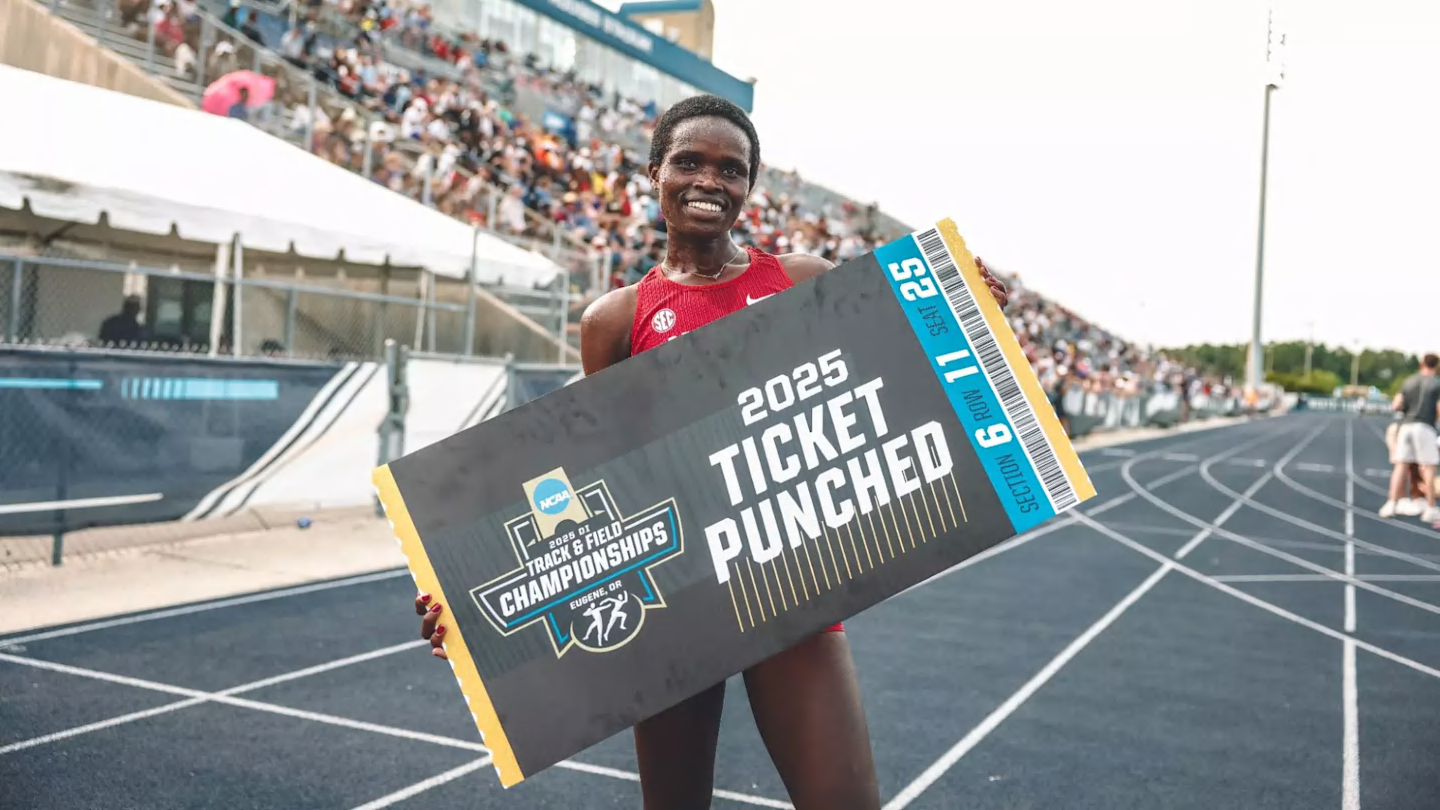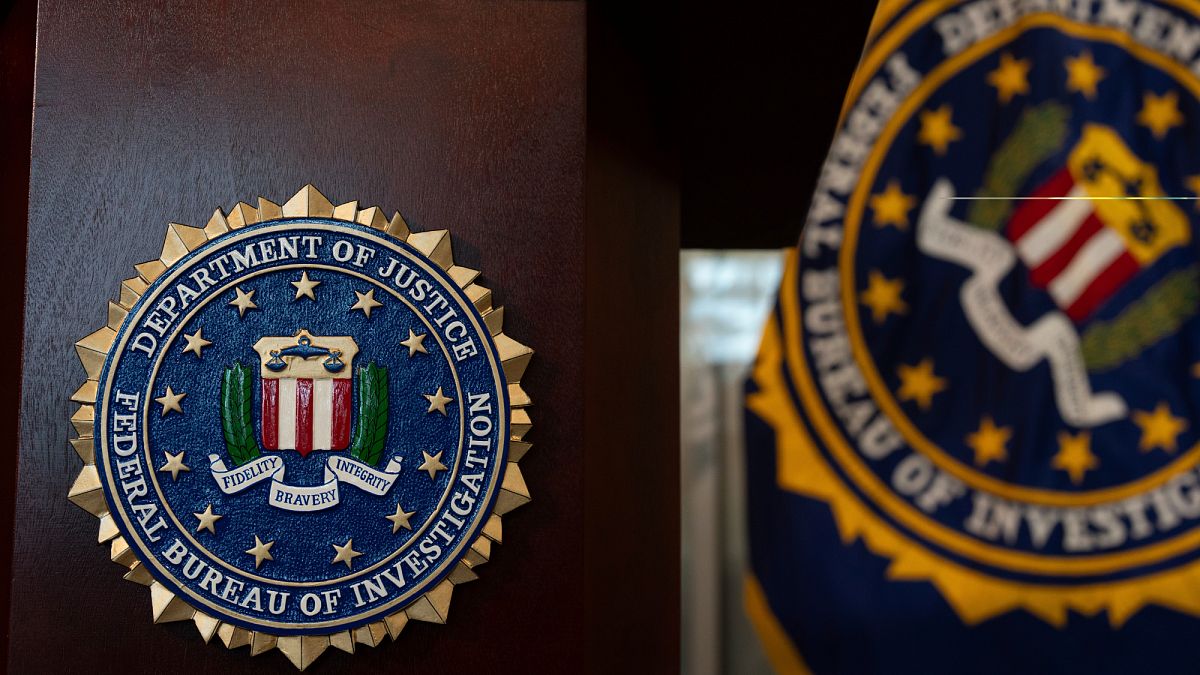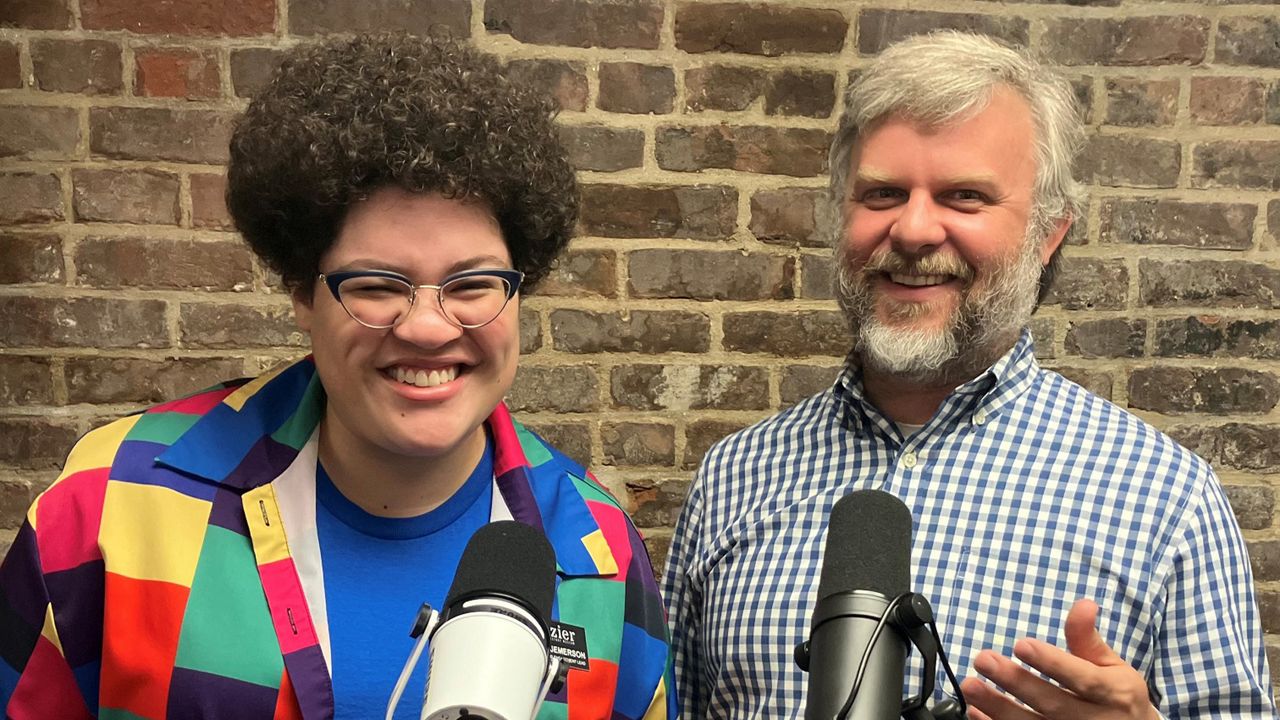Alabama
Goodman: For Alabama and the SEC, tough questions 50 years in the making

This is an opinion column.
_____________________
There was an awkward moment on Monday during a luncheon in Birmingham that centered around the topic of race and sports.
Imagine that.
It was nothing bad. In fact, it was a positive and necessary step along that long, winding, sometimes bleak, other times hopeful path of progress. Talking about the tough stuff, and putting everything out there, is how the healing happens. This is what my therapist tells me. When it involves beef tips, winter greens and strawberry cake, well, that’s even better.
Former NBA and Alabama basketball star Leon Douglas, now 69 years old, has never been about holding anything back, and so he asked a pointed question during the Birmingham Tip Off Club’s get together.
“Why did it take 50 years?” he said to a group of mostly older white men, and the question hung in the air like a jump ball to begin a game.
Better now than never, right?
Douglas, Boonie Russell and Ray Odums were the guests of honor at the Tip Off Club. The reunion of those storied names aimed to celebrate the 50-year anniversary of the first time five Black basketball players started a game together in the Southeastern Conference. Douglas, Russell, Odums, T.R. Dunn and the late Charles Cleveland were the players for Alabama in 1973. Dunn, who lives in Charlotte, couldn’t make it down for the talk and Cleveland was represented by his younger brother, Ray Cleveland. Hall of Fame sports columnist Kevin Scarbinsky, one of my journalistic heroes, led the discussion.
I wrote a column in April about Ray’s love for his big brother, and Ray’s quest to have Charles remembered as one of the greatest athletes in state history. The Birmingham Tip Off Club’s meeting was another opportunity to honor the past and reflect on its importance. Cleveland and his Alabama teammates were trailblazers, and that makes them central figures in Alabama’s complicated history of sports and civil rights.
Douglas’ question made me uncomfortable and also made me think. Why are things so slow to resolve in the Deep South? Is it guilt? Politicians? Is it the lingering shadow of generational racism, or maybe just the Southern culture of avoiding awkward moments at lunch?
It took federal mandates to bring Blacks and whites together. That was 60-some years ago, and, if we’re being completely honest, it didn’t really work all that well. Maybe it will be another 60 years from now when the school districts and churches figure things out — that the children are better together than they are apart.
The state and local mandates of Southern apartheid began ending in the 1960s. In the 1970s, sports served as the showcase of the South’s forced social evolution. The 1973-74 Alabama basketball team, coached by the legendary C.M. Newton, went 22-4 overall and 15-3 in the SEC. On Dec. 28, 1973, the group made history when Newton elevated Dunn into the starting lineup in place of point guard Johnny Dill. It gave Alabama the first Black starting five in SEC history. Alabama upset No.8 Louisville that day in the Cardinals’ own holiday tournament.
At the time, Douglas, Russell and Odums didn’t think anything about their places in history. Looking back, they say that being Black Alabama natives playing for Alabama was important to them. That feeling of togetherness makes me proud all these years later.
“We wanted to do something that made a difference,” Russell said.
Why did Newton wait until the game against Louisville to feature an all-black starting five? Perhaps it’s because Newton wanted freshman Dunn to earn the starting role, or maybe it was for a different reason. Louisville featured Birmingham prep basketball standout Allen Murphy. I’ve written about Murphy in recent years, too. Murphy chose Louisville over Alabama, and Alabama’s players believe that it was because Louisville’s recruiters told Murphy that Alabama would never start an all-Black lineup.
Had Murphy gone to Alabama, Russell, Douglas and Odums believe that Alabama would have won a national championship.
Cleveland led the 1973-74 Alabama team in scoring, averaging 17.1 points per game, and the Crimson Tide finished No.14 in the final AP poll of the season. Unfortunately, one of the greatest teams in Alabama history didn’t make the NCAA Tournament. Back then only conference champions made the field. Alabama lost a pair of close games to Vanderbilt and was left out of the Big Dance.
Those narrow defeats still eat at Russell to this day.
“Vanderbilt invented offensive fouls,” Russell said. “I’ve never seen so many players fall so many times.”
Alabama’s “First Five” laid the groundwork for three conference championships. The Crimson Tide won SEC regular-season basketball titles in 1974, 1975 and 1976. Russell went on to play in South America after injuring himself during a training camp with the Lakers. Odums played defensive back in the CFL. Douglas had a long professional basketball career in the NBA and Europe. Dunn played in the NBA from 1977 to 1991 and then coached in the league until 2016. Cleveland, who passed away in 2012, was drafted by the 76ers.
Dunn and Douglas are in the Alabama Sports Hall of Fame, but their teammates deserve spots, too. Their contributions to the state transcend statistics and championships. Why did it take 50 years for the “First Five” to be honored by the Birmingham Tip Off Club? Douglas’ question will stick with me. There was bitterness there. I’d like to think that things are always getting better, and that one generation shouldn’t be defined by the sins of the ones before it.
It’s more difficult than that, though, and it takes asking tough questions in the hopes of arriving at better answers. Fifty years ago, the “Five Five” made history in the SEC. If we’ve come so far, then why are the SEC’s football coaches all white today?
Joseph Goodman is the lead sports columnist for the Alabama Media Group, and author of the most controversial sports book ever written, “We Want Bama”. It’s a love story about wild times, togetherness and rum.

Alabama
Top Linebacker Reveals Final Schools: Ole Miss Football, Florida, Michigan, Alabama

Loganville (Ga.) Grayson four-star linebacker Anthony Davis remains a priority target for Lane Kiffin and the Ole Miss Rebels in the 2026 Recruiting Cycle.
Davis, a Top-20 rated linebacker in America, plays his prep ball for one of the Peach State’s top high school programs as he continues his development for the next level.
Following a standout junior campaign, Davis has earned double-digit scholarship offers with Ole Miss joining the likes of the Alabama Crimson Tide, Michigan Wolverines and Auburn Tigers, among others.
Kiffin and the Ole Miss Rebels sit atop the list for Davis alongside the Crimson Tide and Tigers as he begins evaluating his contenders.
The 6-foot-1, 190-pounder flaunts an impressive offer list, but according to Rivals, it’s Ole Miss and Alabama that are making an impact this offseason.
Davis unofficially visited the Rebels on April 17 where he had the chance to soak in the scenes of the Magnolia State for a quick trip around the staff.
“The hospitality they showed me and my family was like no other,” Davis told On3 Sports. “I sat down with the DC for a hour just going over how I fit their scheme and it was great.”
The coveted linebacker officially visited the Auburn Tigers this weekend and he’ll also check in with the Alabama Crimson Tide on June 20 to round out his summer trips.
But the Ole Miss Rebels have now landed an official visit with Davis where he’ll be in Oxford during the weekend of June 6, according to On3 Sports.
“Ole Miss has made things interesting,” Davis told On3 Sports. “The hospitality and the way they want to play for me really caught my attention.”
Davis is a Top-250 prospect in America and a Top-20 linebacker with a myriad of programs heavily invested in the talented defender.
Now, he’s down to five schools heading into the summer months with the Ole Miss Rebels joining the Michigan Wolverines, Auburn Tigers, Florida Gators and Alabama Crimson Tide.
Kiffin and Co. will continue looking to bolster the second level of the defense this offseason with the program currently hosting Auburn linebackerr commit JaMichael Garrett for an official visit to Oxford.
The Visitor: JaMichael Garrett – Four-Star Linebacker
The list of recruits heading to town continued growing this week with the program adding Baton Rouge (La.) Central linebacker JaMichael Garrett.
Garrett, who recently made the move from Alabama to Louisiana to round out his high school career, will officially visit Ole Miss this weekend.
The four-star, Top-10 linebacker in America remains one of the most sought-after second-level defenders with multiple premier programs pursuing his services.
As it currently stands, Garrett is committed to Hugh Freeze and the Auburn Tigers after going public with a decision last summer.
The 6-foot-, 195-pounder has reeled in offers from the likes of the LSU Tigers, Miami Hurricanes and USC Trojans, among others, but the Ole Miss Rebels are a school that continues generating buzz.
Ole Miss Football Target, Top-10 Quarterback in America Earns Elite 11 Invite
Ole Miss Basketball Beats Out North Carolina Tar Heels, UCONN for Top-50 Prospect
Ole Miss Women’s Basketball Lands in Early Top-25, Named ‘Offseason Winners’
Follow Zack Nagy on Twitter: @znagy20 and Ole Miss Rebels On SI: @OleMissOnSI for all coverage surrounding the Ole Miss program.
Alabama
Alabama Track and Field to be Heavily Represented at National Championships

Alabama track and field wrapped up its final day of the NCAA East First Round in style as the Crimson Tide are sending three more athletes to the National Championships.
Doris Lemngole’s 9:13.12 time at the 3,000-meter steeplechase not only helped her win the race but she also broke the Hodges Stadium facility record. NC State’s Angelina Napoleon crossed the finish line in 9:37.12––which was the second-best mark. In other words, as usual, Lemngole absolutely dominated.
Joining Lemngole was Miracle Ailes, who used a season-best performance of 1.82 meters (5-11.50) to advance in the high jump, and Precious Nzeakor, who clocked an advancing, 23.03 time in the 200-meter race.
Across the four-day NCAA East First Round meet, the Crimson Tide be heavily represented at the National Championships at Oregon’s Hayward Field from June 11-14:
“Our team showed incredible grit and focus this week – advancing the number of student-athletes we did is a testament to their hard work, and we’re excited to carry this momentum to the National Championships in two weeks,” Alabama head coach Dan Waters said in a press release. “I couldn’t be prouder of how everyone competed throughout this meet – they supported each other, they rose to every challenge and represented the University of Alabama with excellence. This was a total team effort, and they’ve truly earned their shot on the national stage.”
No events are scheduled.
Vanderbilt Faces a Long, Difficult Sunday After Loss to Louisville
Mizzou’s Freshman Defensive End is a Clear Day 1 Contributor: The Extra Point
90 days
June 1, 1968: Kenny Stabler and Dennis Homan were named to compete in the College Football All-Star game, with the collegiate stars slated to face the NFL Champion Green Bay Packers, winners over the Oakland Raiders in Super Bowl II. The Packers were led by former Alabama quarterback Bart Starr, the MVP of both world championship games. — Bryant Museum
“I don’t know, we haven’t played Alabama yet.”
— Vince Lombardi after being asked what it felt like to be the greatest football team in the world just after winning the ’66 Super Bowl.
Alabama
United Methodists close 20 churches in Alabama: where are they?

United Methodists on Friday voted to close 20 churches in North Alabama, including a church founded in Hoover in 1993 with a 15-acre campus next to Hoover Metropolitan Stadium.
Discovery United Methodist Church, with a 350-seat sanctuary, had grown to 600 members by 2003. The church held its closing service on Easter Sunday, April 20, after years of declining attendance.
The conference has a plan to turn the Discovery campus over to Trinity United Methodist Church in Homewood to possibly reopen next year as a third location of Trinity, which has its main campus on Oxmoor Road and another in West Homewood.
“We want to be part of planning something new, but we want it to be about a redemption story,” said the Rev. Brian Erickson, senior pastor of Trinity United Methodist Church. “A lot of conferences would have just taken that property, sold it and put the money in the bank. I’m so grateful to the conference they want to invest in the kingdom instead. They’re gifting us the property.”
Trinity, which is celebrating its centennial next year, plans to re-launch the campus as the Trinity campus in Hoover by August 2026, Erickson said.
“We’re trying not to get caught in a narrative that we can’t move forward, in places in which there are opportunities for United Methodist presence to be,” said Bishop Jonathan Holston, who oversees all United Methodist churches in Alabama. “That’s what we’re trying to do, is find those places where God has called us to go.”
More than half of all United Methodist churches in Alabama disaffiliated over the past several years, leaving the denomination in a schism. Most negotiated to buy their property and take it with them, although some left empty churches behind. Money paid to the conference by departing churches went into a reserve fund, which the conference is drawing on to make it through current budget deficits.
“We’re still processing all of that, to see where we are,” Bishop Holston said.
Closing declining churches is sometimes necessary, he said.
“It’s always a solemn moment when we think about the mission and ministry of those congregations we are closing,” Bishop Holston said. “They were part of our community.”
The other United Methodist churches announced as closing include:
Jubilee Church in Alexander City
Oak Grove Church in Childersburg
Rehobeth Church in Vincent
Trinity Church at 400 East St. in Talladega
Christ Central Church in Rainbow City
Langston Church near Lake Guntersville in Jackson County
Mt. Oak Church in Marshall County
Tucker’s Chapel in Boaz
Courtland Church in Lawrence County
Hollywood Church in Jackson County
Isom’s Chapel in Athens
Moulton First Church in Lawrence County
The Table, which started in 2015 as a house church in Huntsville
Cahaba Church at 3580 Cahaba Valley Road in Jefferson County
Cottondale Church in Tuscaloosa County
Restoration Mission, 631 3rd St. West in Birmingham
Walker Chapel on Walker Chapel Road in Fultondale
Wesley Chapel in Ralph in Tuscaloosa County
Woodstock Church in Bibb County
Erickson noted that Trinity was once a failed church in Birmingham’s Lakeview neighborhood, before it relocated to Homewood in 1926. The 3,600-member Trinity Church is now one of the largest United Methodist congregations in North Alabama with several thousand members.
“We were a failed church,” Erickson said. “The conference took the proceeds from that building in 1926 that they sold to make the fire station that became Bogue’s and is now Taj India. They set aside that money for a new church in 1926 in Homewood.”
Discovery’s failure was surprising, after a promising start that coincided with Michael Jordan playing baseball for the Birmingham Barons at the Hoover Met in 1994 at the hub of the Trace Crossings subdivision that has more than 1,200 houses.
“It’s really baffling,” Erickson said. “Every church has a life cycle. The lives that were shaped and changed and made better by Discovery, those continue. That legacy will never go away.”
Discovery United Methodist Church in Hoover opened in 1993 in the Trace Crossings subdivision. The North Alabama Conference voted to close it on May 30, 2025, after its final service was held on Easter Sunday. (Photo by Greg Garrison/AL.com)ggarrison@al.com
-

 World1 week ago
World1 week agoNeo-Nazi cult leader extradited to US for plot to kill Jewish children
-

 Business1 week ago
Business1 week agoPlastic Spoons, Umbrellas, Violins: A Guide to What Americans Buy From China
-

 World1 week ago
World1 week agoCade Cunningham Gains $45 Million From All-NBA Honors
-

 Movie Reviews7 days ago
Movie Reviews7 days agoMOVIE REVIEW – Mission: Impossible 8 has Tom Cruise facing his final reckoning
-

 Movie Reviews1 week ago
Movie Reviews1 week agoKapkapiii movie review: Horror-comedy signals a saturation point for the genre
-

 Rhode Island1 week ago
Rhode Island1 week agoAssessors find ‘nonconformities’ with national standards at RI Crime Lab. What to know.
-

 Movie Reviews1 week ago
Movie Reviews1 week ago‘Magellan’ Review: Gael Garcia Bernal Plays the Famous Explorer in Lav Diaz’s Exquisitely Shot Challenge of an Arthouse Epic
-

 Education1 week ago
Education1 week agoVideo: Judge Blocks Trump Move to Ban Foreign Students at Harvard















